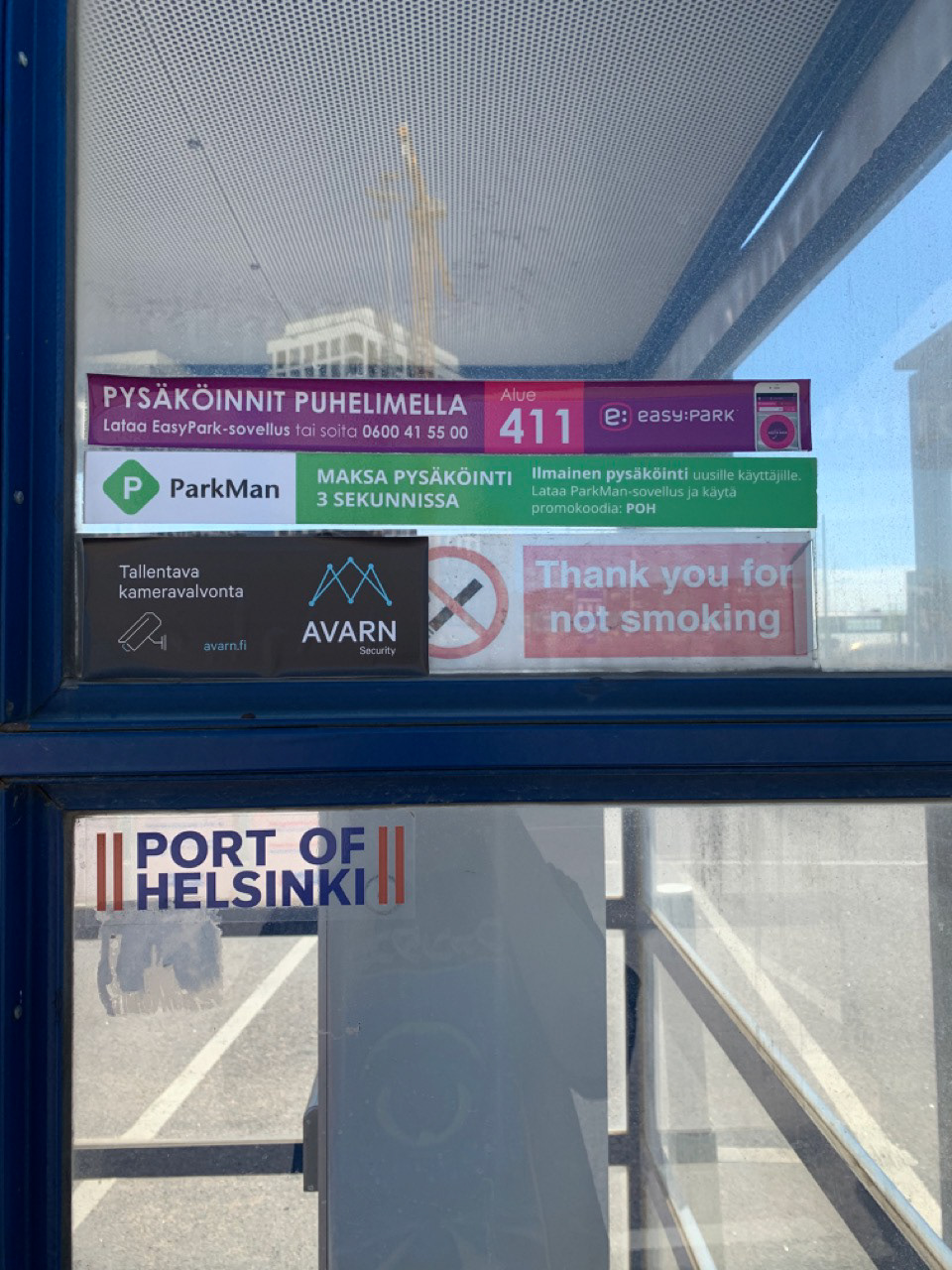Port of Helsinki (PoH) is responsible for all ports within the city of Helsinki. Parking service is one of the main revenues at multiple port locations. With a new parking facility coming, PoH seeks new opportunities to utilise modern technology and data in improving its services.
I participated in the service vision phase to help identify customer needs, build and validate prototypes.
My role
Field research, design benchmarking, prototyping.
I worked in collaboration with a principle designer.
Duration
2 months
The challenge
The new parking facility was designed to bring a seamless experience: quick and easy parking without any barriers when driving in and out. However, the current parking system operation was outdated and entire offline, leading to efficiencies and missed opportunities.
Our goal was to help PoH vision a comprehensive parking experience that would make life easier for travellers and at the same time open new business opportunities.
Current state analysis
At this phase, the main objectives were to get familiar with the current spectrum of tools, technical possibilities and limitations and understand the problems of users.

Parking facility at West Terminal

Parking facility at West Terminal

Parking ticket machine

Parking ticket machine

Information on parking ticket machine
We explored the problem area by talking to passengers at one of the port terminals. We also interviewed representatives from PoH partners in parking operations and the in-house ICT department.
To gain a deeper understanding of the user's context, we visited the existing parking facilities and tried out the current parking experience. We also looked for parking information from different channels: PoH website, on-site information board etc.
"I checked the parking availability on the internet before leaving from Turku. I thought about reserving beforehand. The price calculator was good! Dad said, that now with covid, there ought to be plenty of space. I still came in early."
- A young passenger travelling to Estonia
Mapping the experience
After talking with current users, it became clear that most of the problems they have been facing happened at the beginning of their experience. Therefore, first-time customers became our main user group. From the collected insights, we were able to map down the current experience of a first-timer together with related thoughts and feelings.
Mapping the current parking experience
From the experience map, we identified that an online reservation system would provide significant benefits by eliminating one of the biggest uncertainties in the user's journey: the availability of parking spots. We proceeded to design a sitemap that aimed to create a seamless and linear parking experience. Additionally, we made use of the existing price calculation, which was appreciated by many users, in the design to enhance the overall experience.
Linear and simple parking reservation flow
Design benchmarking
To explore the best solutions and refined conventions from other well-established services, I investigated several parking-focused platforms and parking reservation services for large airports. I specifically considered their suitability within the context of PoH. When it comes to airport solutions, they often excel in dynamic capacity and ability to handle a variety of use cases.
These solutions present several elements that would enhance user experience:
- Clear lists of all parking options
- Emphasise the distances to the terminal
- Including also unavailable options to provide comprehensive information to customers.
- Voluntary fields for the car's model and colour.
- Emphasise the distances to the terminal
- Including also unavailable options to provide comprehensive information to customers.
- Voluntary fields for the car's model and colour.
Similar to airport services, customer guidance through various maps and clear instructions is vital at the ports. Navigating complex environments can be challenging, and time is of the essence. Therefore, providing detailed guidance is a key component to ensure a smooth parking experience for customers.
Based on these insights, we added more relevant information to be displayed at each stage in the process before proceeding to a detailed layout design.
Revised flow with additional information
Design concept
The concept involved a browser-based one-page application designed with simplicity in mind. The starting point was designed with the assumption that users may be unsure of where to park or the name of their departure terminal or port.
Final design concept on different screensizes
The search function consistently displays all available parking options, even if they may not be suitable or currently accessible for the customer. This approach aligns with established practices in similar solutions, presenting the entire range of offerings with alternative usage scenarios in mind. However, the search results always prioritise the best option based on the walking distance to check-in, making it easier for customers to make informed purchase decisions.
Parking reservation flow on mobile
Moving forward
Due to the timing of the project, the service vision phase ended with the presentation of our design concept. A plan for further development was proposed to look into how users perceive the reservation and how new services can be integrated into the flow. Although the concept was built upon extensive user research and well-received design patterns, it is important to validate and iterate through user testing and feedback.
Cover photo inspired from Giorgio Trovato photo on Unsplash
